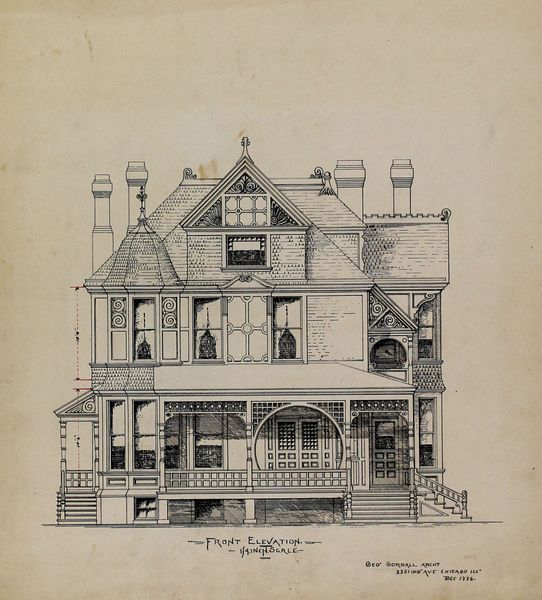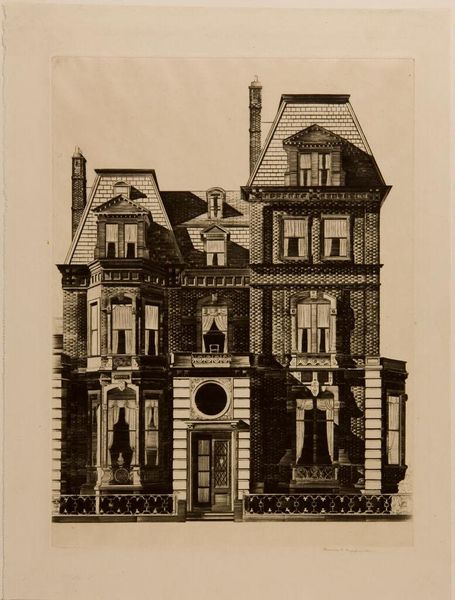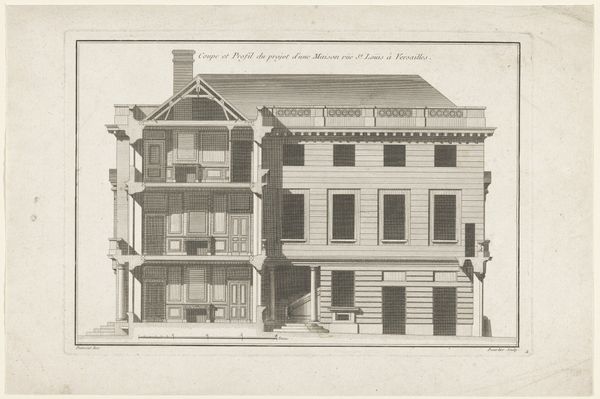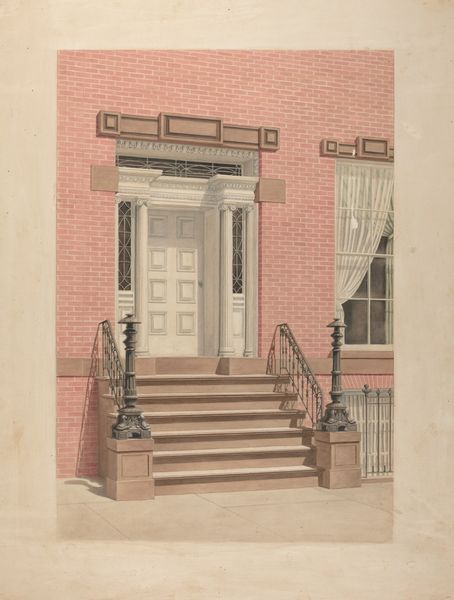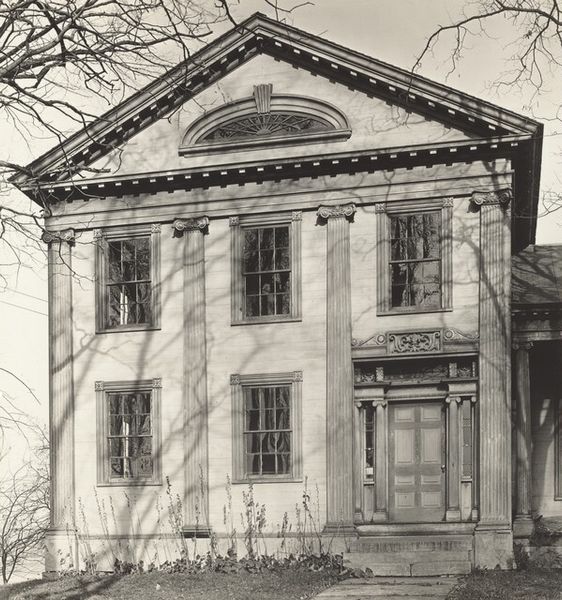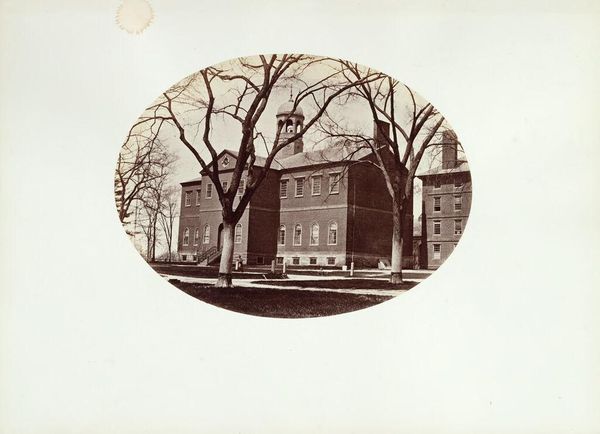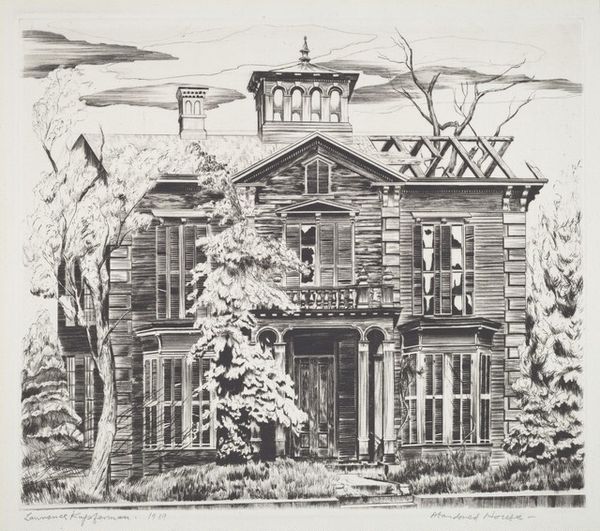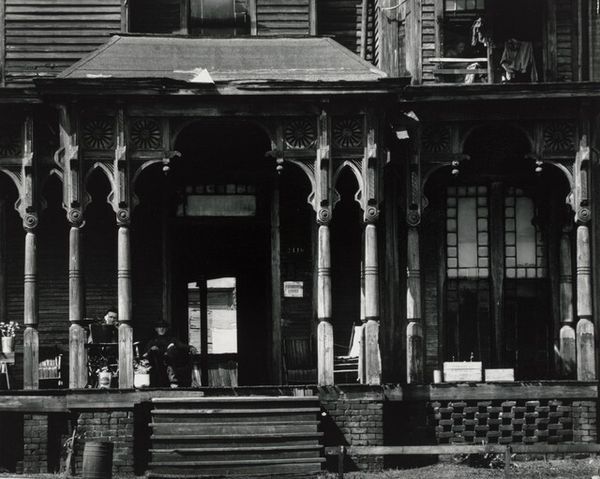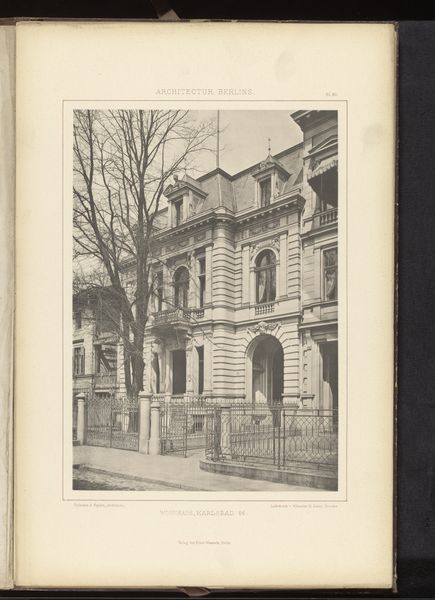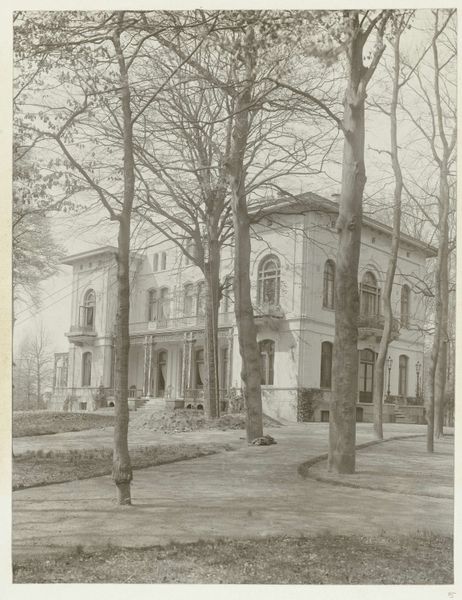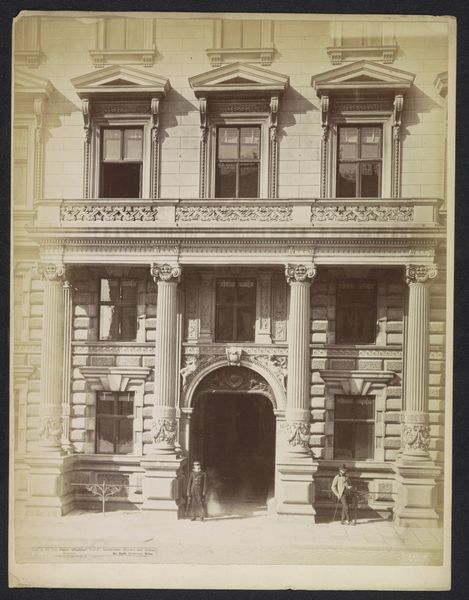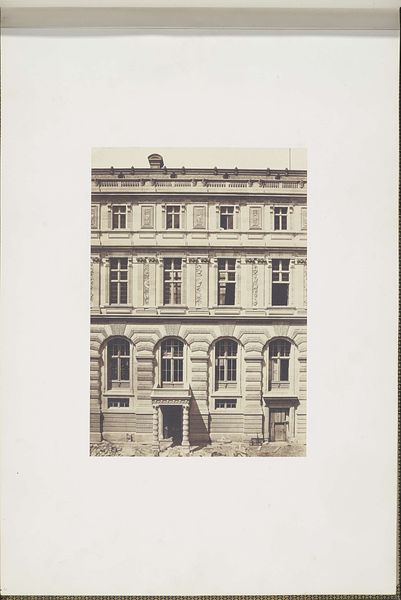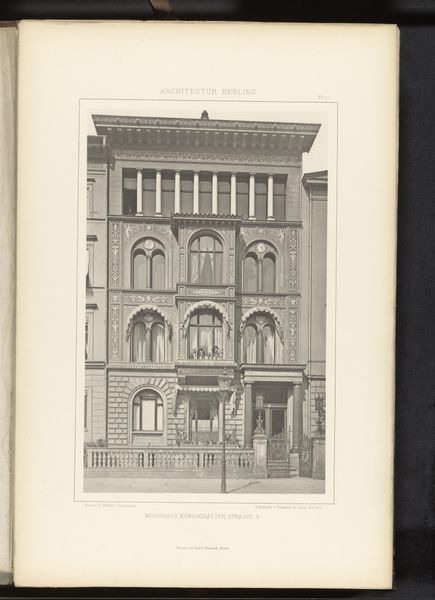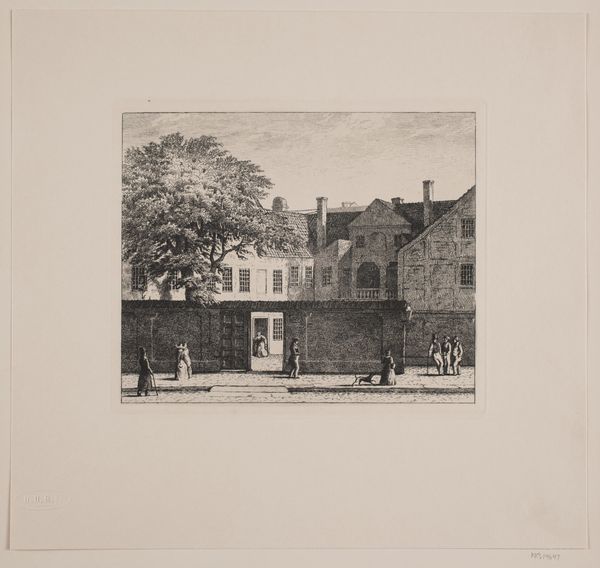
print, etching, architecture
# print
#
etching
#
cityscape
#
architecture
#
realism
Dimensions: plate: 35.72 x 32.54 cm (14 1/16 x 12 13/16 in.) sheet: 38.89 x 35.4 cm (15 5/16 x 13 15/16 in.)
Copyright: National Gallery of Art: CC0 1.0
Editor: This is Lawrence Kupferman's "Victorian Mansion," an etching from 1938. The intricate lines forming the architecture are so compelling. I’m curious about how the etching process informs its message. What do you see in this piece, particularly thinking about materials and methods? Curator: It's fascinating to consider the relationship between Kupferman’s chosen medium and the subject. Etching, as a printmaking process, is inherently linked to reproduction and dissemination. How does rendering a symbol of upper-class permanence - a Victorian mansion - through this readily reproducible medium, democratize or even critique that symbol? Editor: That’s interesting, I hadn’t thought about it in those terms! Is it fair to suggest that Kupferman's choice comments on class distinctions? Curator: Absolutely! Look at the meticulous labor required for etching, and consider who traditionally occupied such mansions versus who performed the work to build and maintain them. The print almost documents a moment of transition. Note the adjacent storefront signage. Editor: You’re right. “Harry’s Laundry, Hand Steam Pressed.” So, is Kupferman juxtaposing a fading opulence against the rise of working-class services? Curator: Precisely. The etching itself becomes a material document of a shifting social landscape, recording not just an architectural style but the economic forces at play. Editor: I see! Thinking about the process as part of the meaning really opens up the possibilities for understanding it. Thanks for sharing this perspective! Curator: It’s a dialogue between process and subject. Understanding one deepens the understanding of the other. A fruitful conversation!
Comments
No comments
Be the first to comment and join the conversation on the ultimate creative platform.
